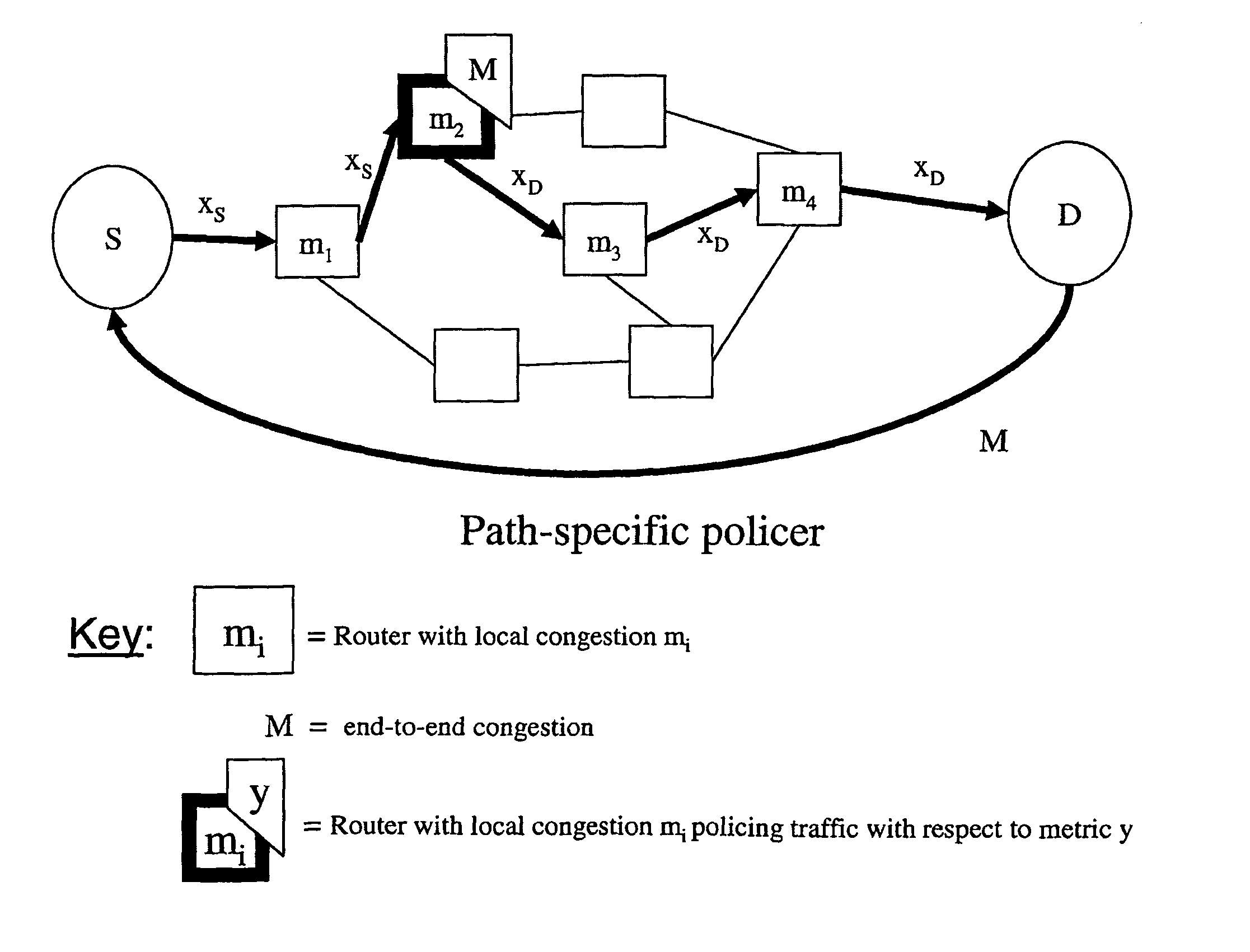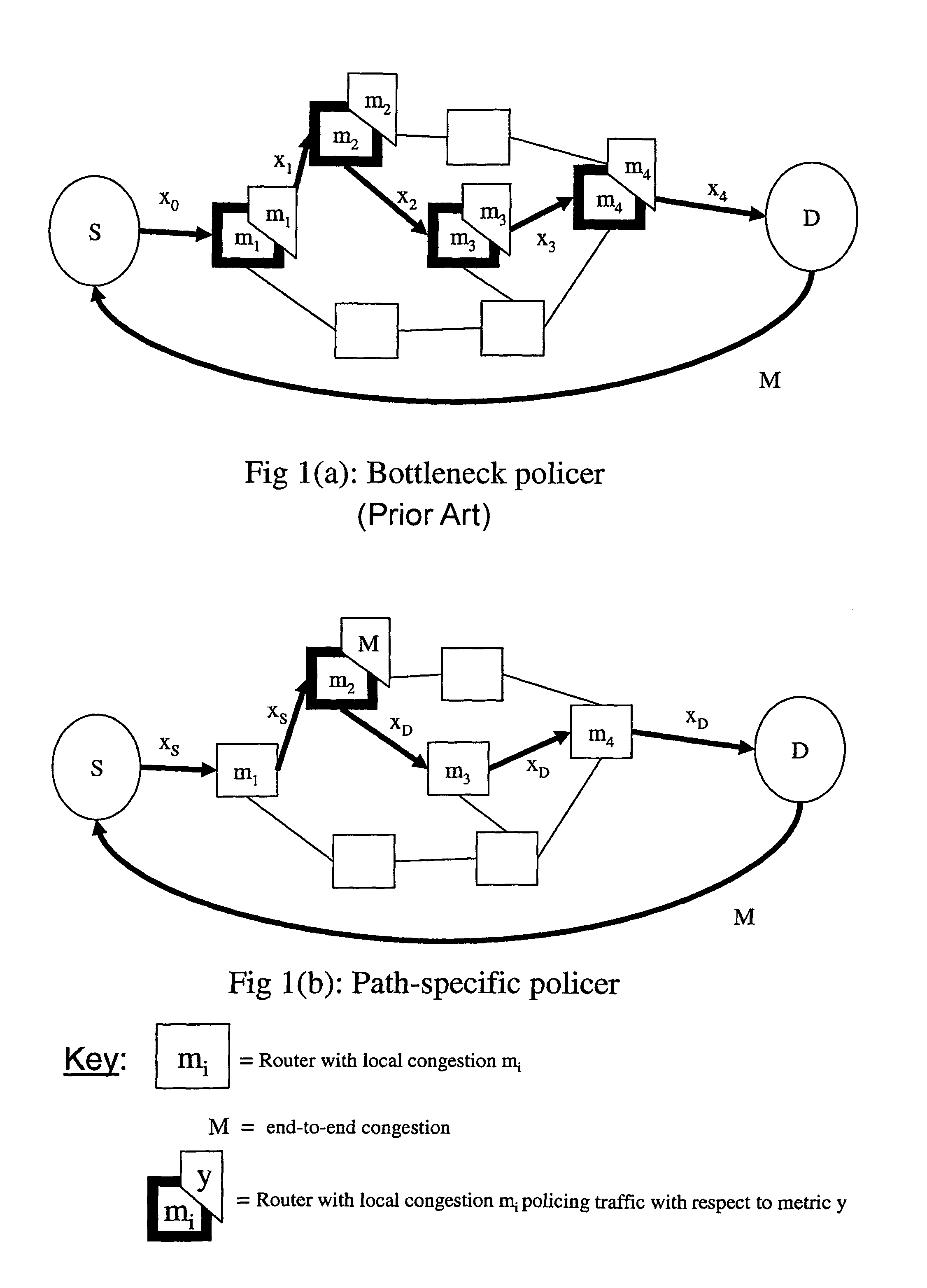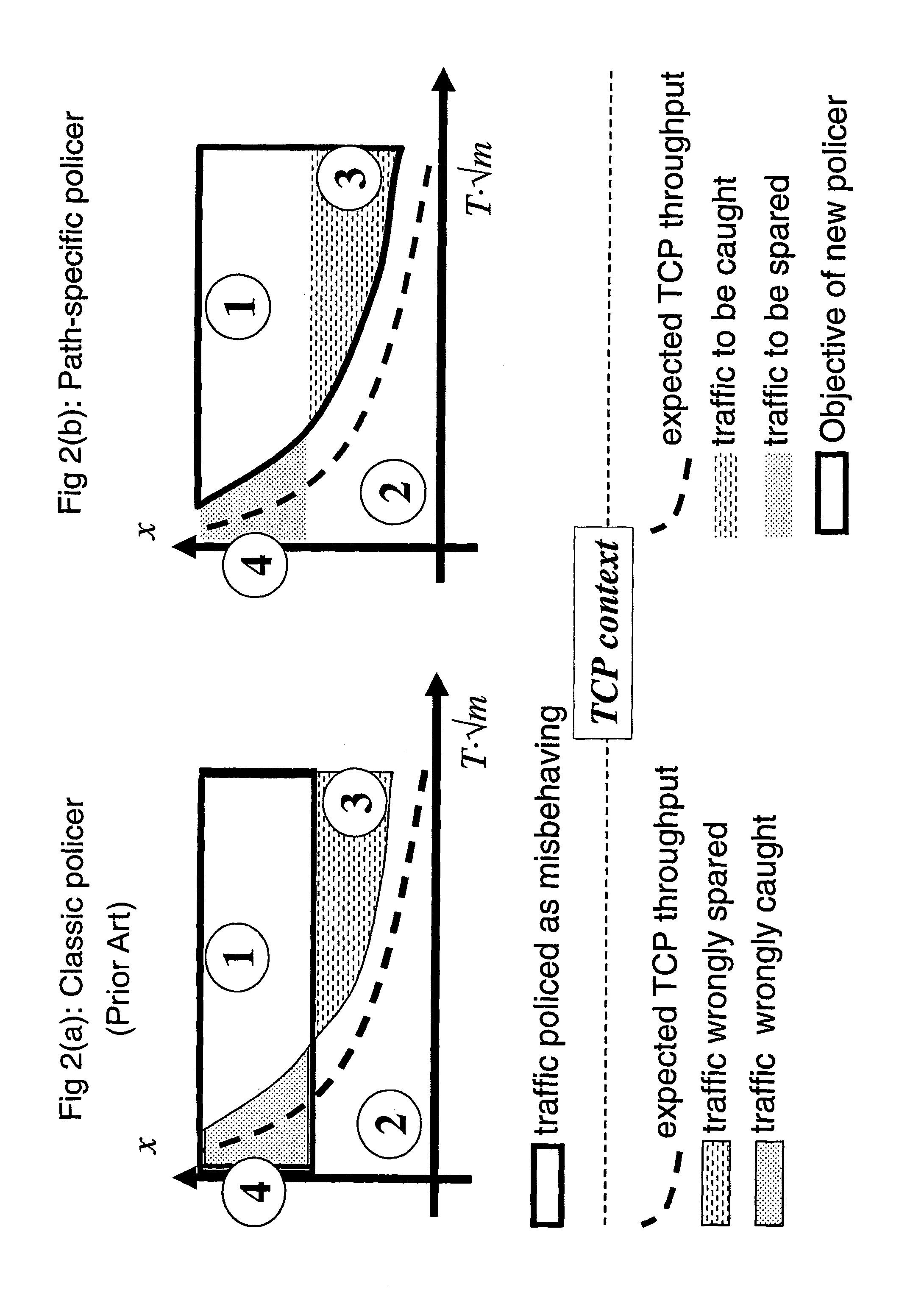Policing networks
- Summary
- Abstract
- Description
- Claims
- Application Information
AI Technical Summary
Benefits of technology
Problems solved by technology
Method used
Image
Examples
Embodiment Construction
Detection of Potential Abusers
Definitions And Notations
[0082]We consider a node in a “re-feedback” network. Flows 1 . . . j . . . J send packets 1 . . . i . . . Nj between times t=0 and t=T, characterizing the observation period. Implicitly, notations J and Nj depend on T. We consider the situation where sources are saturated with payload data, and therefore send as many packets as they possibly can, according to their compliant rate adaptation policy for behaving sources, or to their excessive bandwidth usage for misbehaving sources.
[0083]We define xapp, the apparent throughput for flow j over period T, as the ratio between the volume of data sent over the observation period, given by Equation (3)
[0084]xapp=∑sj,itj,Nj-tj,1(3)
where sj,i and tj,i are the size and arrival time of packet i of flow j.
[0085]In today's Internet, most flows would be expected to be TCP-compliant and their long-term throughput would never be expected to exceed that of a concurrent TCP flow experiencing the s...
PUM
 Login to View More
Login to View More Abstract
Description
Claims
Application Information
 Login to View More
Login to View More - R&D
- Intellectual Property
- Life Sciences
- Materials
- Tech Scout
- Unparalleled Data Quality
- Higher Quality Content
- 60% Fewer Hallucinations
Browse by: Latest US Patents, China's latest patents, Technical Efficacy Thesaurus, Application Domain, Technology Topic, Popular Technical Reports.
© 2025 PatSnap. All rights reserved.Legal|Privacy policy|Modern Slavery Act Transparency Statement|Sitemap|About US| Contact US: help@patsnap.com



